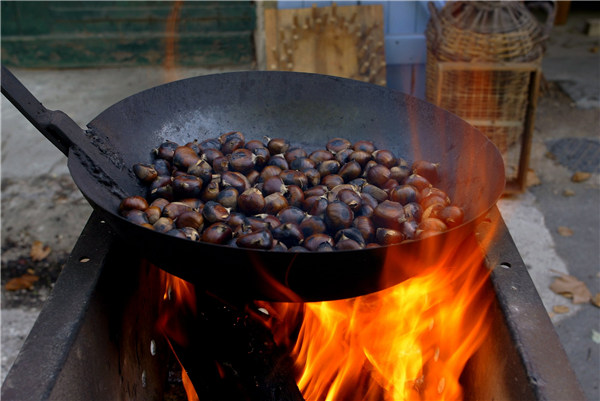 |
|
Roasted chestnuts are a common street food in China during fall and winter, where they are sold outdoors in many towns and at street intersections. [Photo provided to China Daily] |
We did not have the equipment to roast them, so we simply cranked up the oven and baked them. I even experimented with grinding the nuts into powder and making bread and chestnut cookies, which worked pretty well.
Funnily enough, no one else bothered to pick the chestnuts except the squirrels, and we were left to enjoy the free bounty.
In China, not a nut goes to waste. Even wild chestnut trees are carefully monitored and when the burrs fall, they are hastily foraged.
The best chestnuts are from Liangxiang in Fangshan, a southwestern Beijing suburb. Liangxiang chestnuts have become a known brand sold all over the country and are even exported.
Tianjin also produces chestnuts and the farmers there have carefully packaged their nuts in ready-to-eat vacuum packs that are sold in the city's souvenir shops. You can also see these at airport duty free shops all over China.
But ask Beijing locals and they will swear by the chestnuts from Huairou, an outskirt county that is well known for its trout farms and farmers' restaurants. Huairou chestnuts are smaller, but to all accounts, the sweetest.
Chestnuts are grown all over China, and the cultivars are all slightly different. Some are suitable for roasting, others are sold freshly shucked at markets for the cooking pot, and still others are harvested, skinned and dried to be sold all year round. The better quality chestnuts are from Shandong and Fujian.